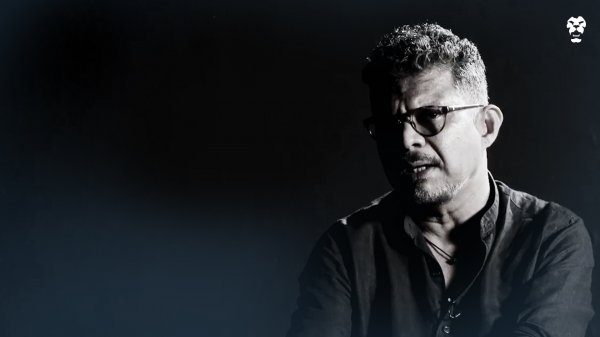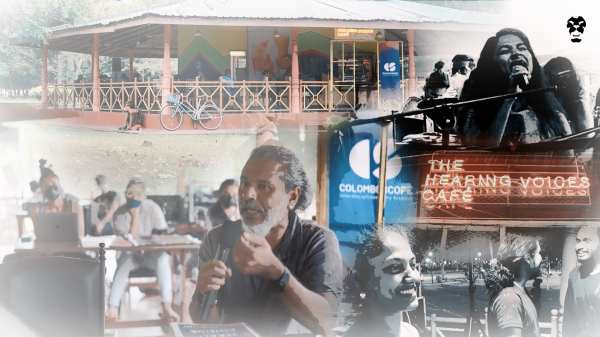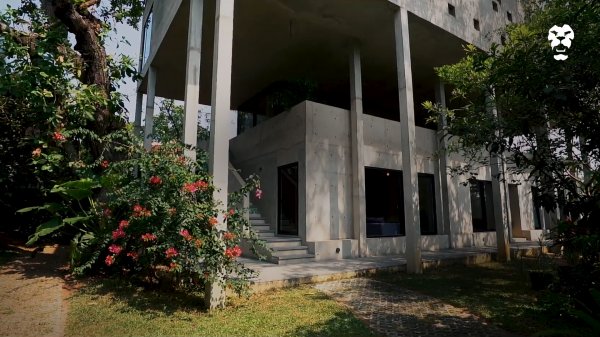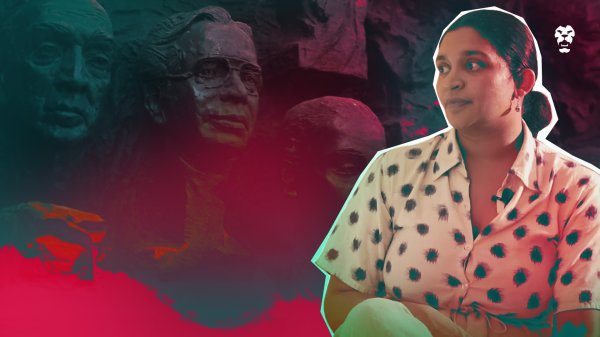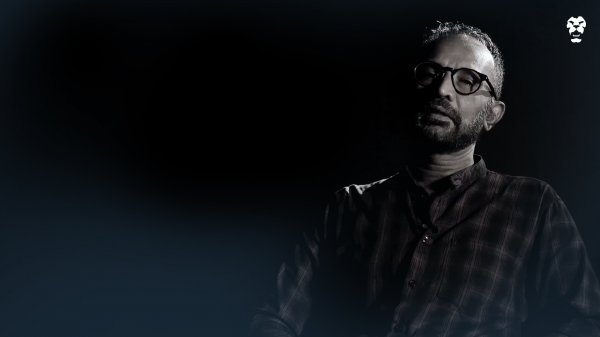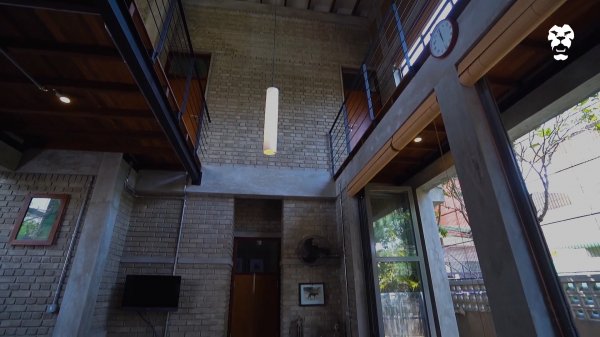.jpg?w=1200)
Prabuddha’s preparation took over an hour; he stripped down to his boxers, doused himself in red paint, and wrapped red tape around his face, covering his eyes, ears and mouth. He then had his hands tied behind him, holding onto a rusted bucket.
“I started crawling from the police barricade,” he said. “I couldn’t use my arms or my legs properly”. This was on 25 July, a few days after the military invaded the ‘Gota Go Gama’ protest site to evict protesters occupying the space in front of the Presidential Secretariat. Prabuddha’s performance was to memorialise the suffering of the oppressed – but specifically, on this occasion, the Tamil pogrom of July 1983.
“While I was crawling, I could hear people asking me to stop,” he said. “I could hear them asking me to give up now, saying it was enough. They stood so close to me. It was painful for them to watch. And all I could think about was how different it must have looked.” In 1983, when the Tamil community was persecuted for the killing of 13 soldiers in Thirunelvi, every day civilians were part of the senseless violence, the burnings and the pillaging. “But not on this occasion,” Prabuddha reflects.
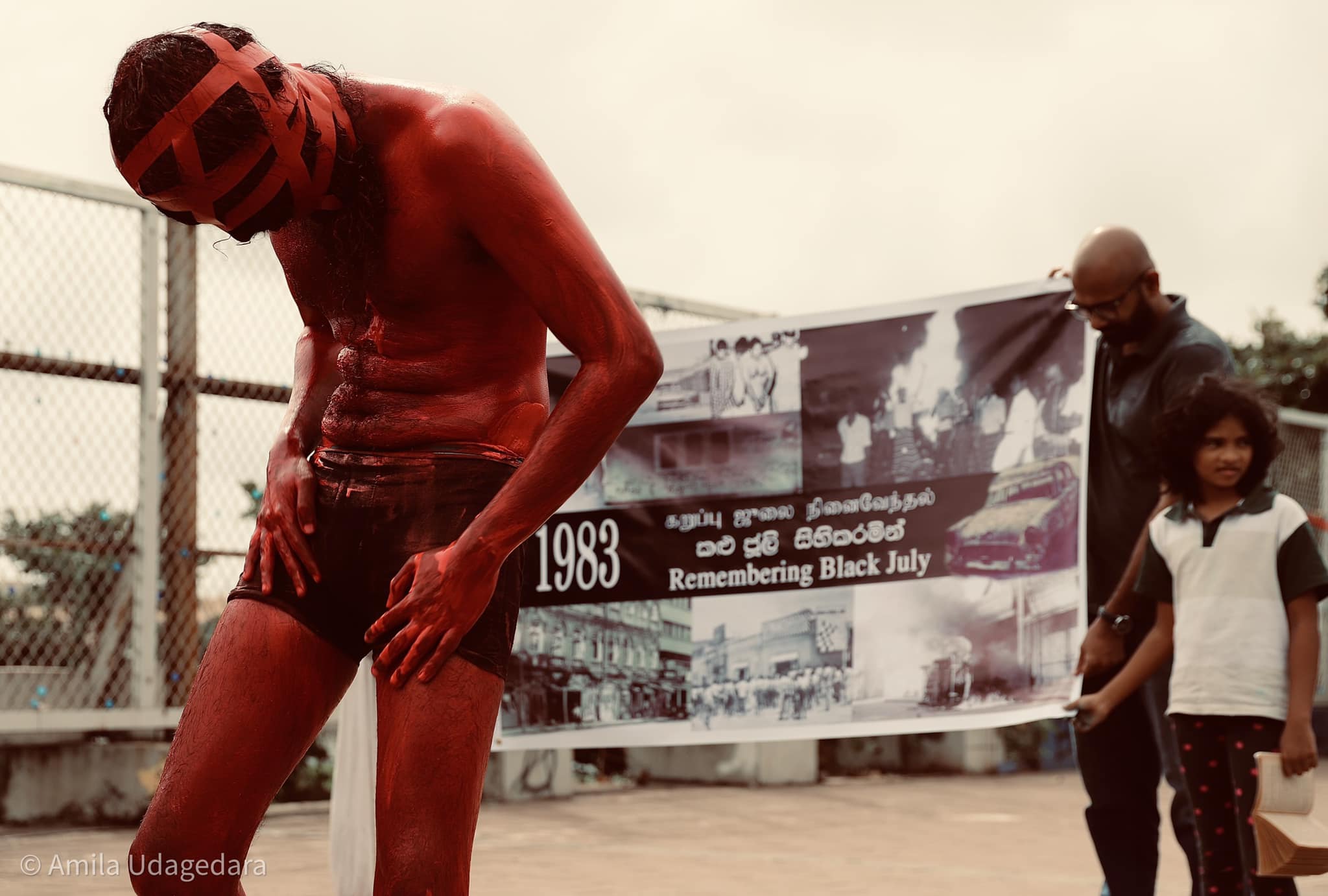
With this act alone, Prabuddha Dhanushka Dikwaththa, a 25-year-old performance artist and documentary photographer, showed the dichotomy of then and now. While the oppression and persecution of minorities have not changed over the years, social awareness of the suffering has begun.
“For many of us, we grew up knowing that something wrong happened in July 1983, that’s why it’s called Black July. But the history that is taught in our school never touches on this particular incident. Not just the events of the Black July, but also the many massacres of innocents that took place in the country, before, during and after the war.”
It took years to break out of this, he told Roar Media. Coming across leftist readings during his Advanced Level years, Prabuddha learned about the events of the pogrom and the massacres of the minorities carried out by the military, paramilitary groups and mobs. Reading the missing chapters of history recorded by the likes of Newton Gunasinghe and meeting historians and activists like Dayapala Thiranagama, Nirmal Ranjith Dewasiri and Wasantha Dissanayake added to the awakening of his political consciousness.
“This got me thinking, how did I contribute to this violence?,” Prabuddha said. He recalls he was still in school during the last stages of the war when the military opened fire at those fleeing the LTTE-occupied territories and hospitals were being bombed. “My silence, my ignorance, contributed to the propagation of the wartime narrative that portrayed that it was the terrorists that were being killed, not innocent civilians,” he said.
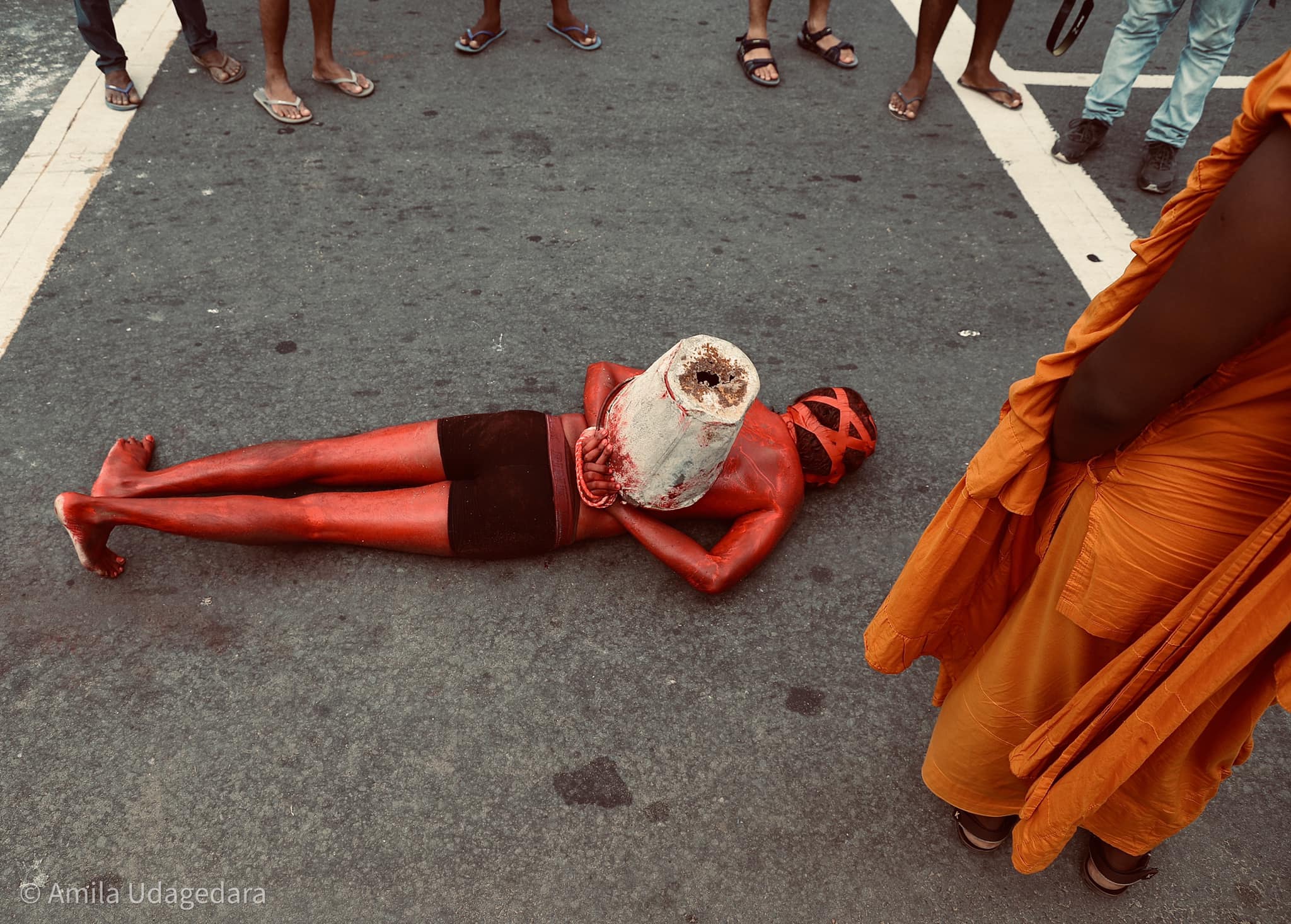
Inspiration for Prabuddha’s performance came from the works of Chandragupta Amarasinghe, a photojournalist active during the 80s. Amarasinghe’s photo of a naked Tamil man seated on the pavement in Borella, bleeding from his head, surrounded by laughing men was not published until 1997.
“[It was the infamous photo of that Tamil man in that Borella gave me the idea for my act,” he said. “The red paint, the nakedness and crawling were to showcase the suffering of the body. The covering of the face was to show the removal of identity when a person becomes a victim of such hatred.”
But what about the bucket? Why was a bucket part of the performance?
“The Tamil word for the bucket is ‘vaali’. In Sinhala, it’s ‘baaldiya’. Tamils pronounce it differently. In 1983, the mobs used this to identify Tamils – they asked people to say the word ‘baaldiya’, to tell if they were Sinhala or Tamil,” he explained.
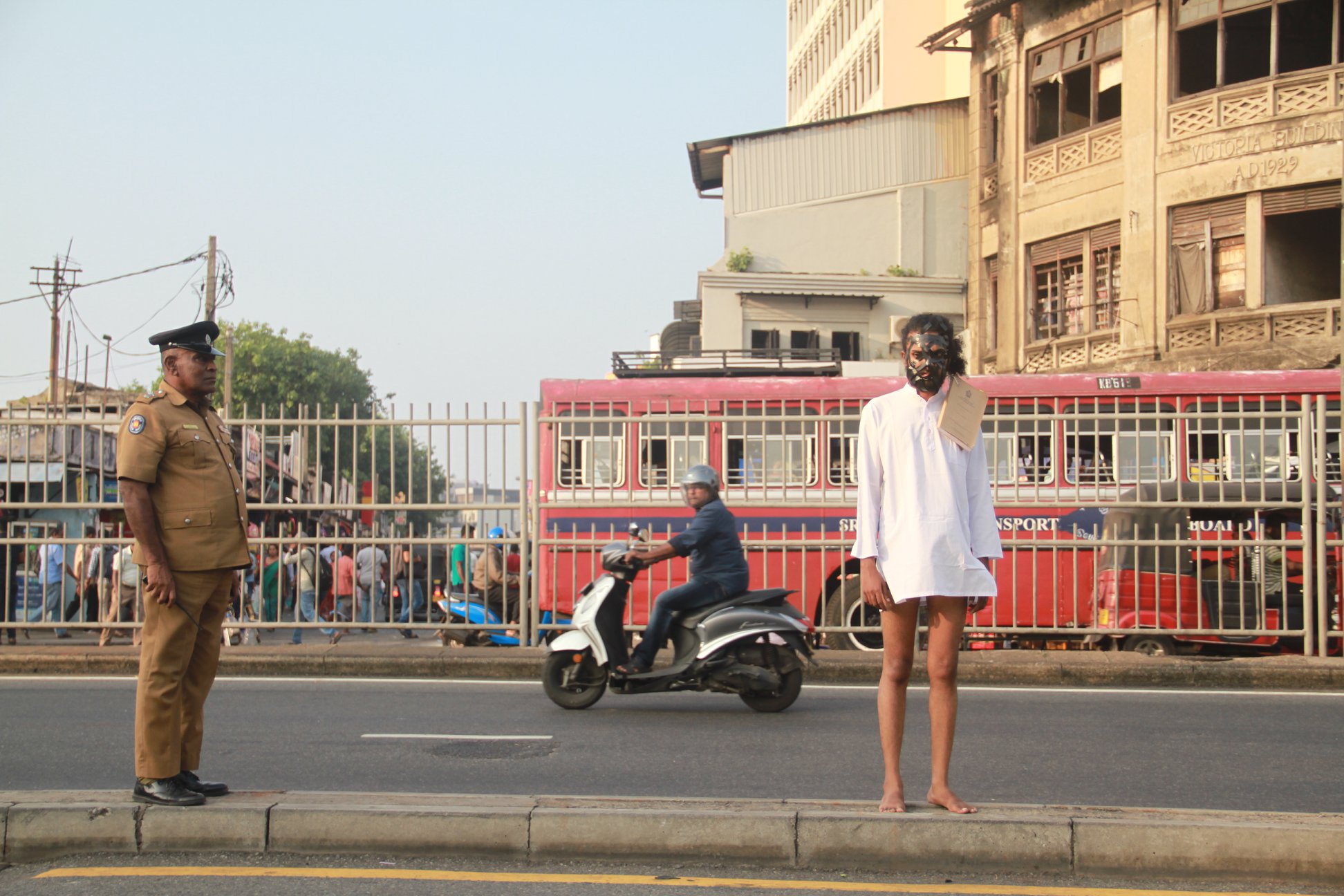
The venue of the performance was also important, Prabuddha pointed out. “If you consider the Galle Face Green space, that was the ground Tamil protesters conducted the satyagraha in 1956 against the Sinhala Only Act. Historically, the space is significant, running parallel to the 2022 protest and how that was squashed by the current government in July.”
The performance gained massive social media attention; Prabuddha’s suffering captured on camera was circulated widely, inspiring thought and critique. The stark red and gory performance perfectly represented the suffering of the oppressed. It was brutal to watch as Prabuddha struggled across the road.
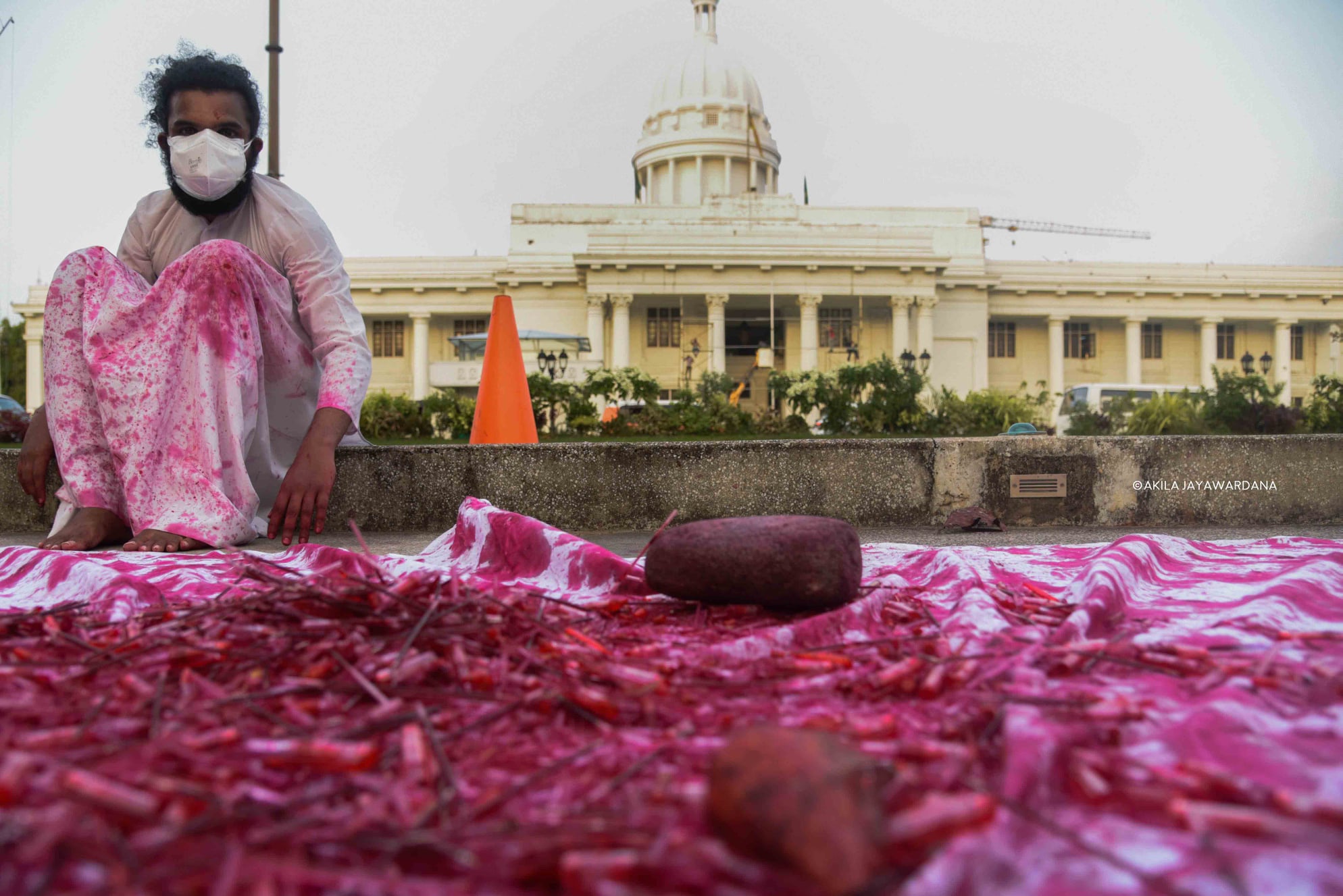
In the videos recorded that day, onlookers were seen removing small rocks and other obstacles off the road, to make Prabuddha’s passage easier. Others poured water onto the tarred street, hoping it would help. “When I’m performing, the emotions I evoke in my audience, those who embody that space and their own relation to the history, is important to me. The realisation that occurs from seeing the performances leads to anxiety and an uncanny cognitive dissonance. My body’s suffering, in that way, becomes part of that. I was told someone fainted during the performance. At one point, someone untied my hands by force. A monk stood in front of me, hoping I would stop. I couldn’t see properly but I could hear and see the saffron robe,” he said.
“There was another man who stood and walked next to me the entire time. At the end of my performance, he helped me clean up the paint. He walked me and sat me down. Someone told me it was a man selling betel leaves there. I still don’t know who it was,” Prabuddha remembers of that day.
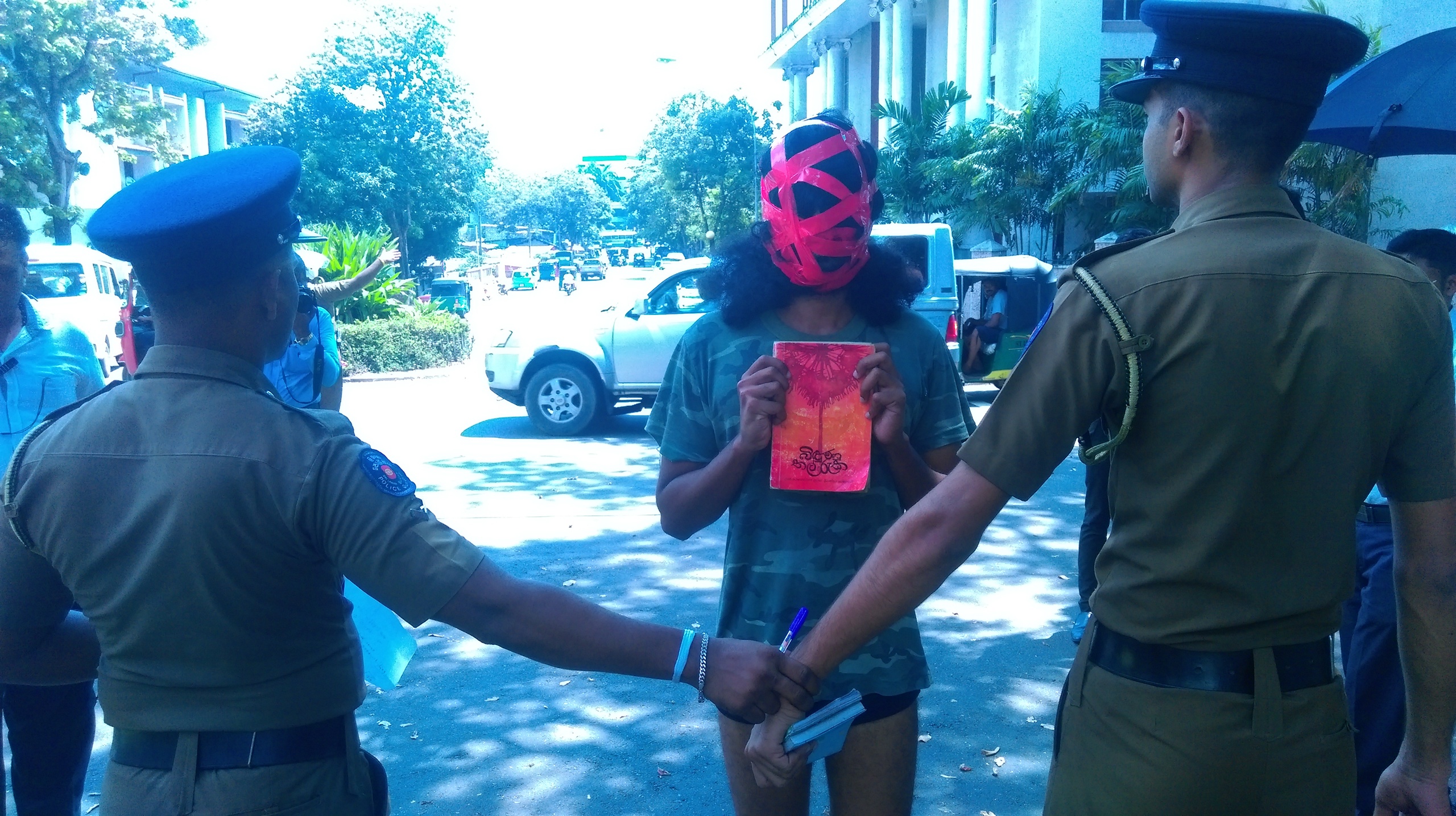
This is not the first time Prabuddha has performed so daringly in front of a crowd: in 2017, dressed in boxers and a camouflage print t-shirt, carrying a printed copy of the Bindunu Thal Raka (බිඳුණු තල් රුක ), a book that documented the acts of violence against minorities during wartime, he protested outside the Supreme Court of Sri Lanka against the Prevention of Terrorism Act (PTA). “It’s fascinating to see the reactions from the crowds,” he said. Some people thought I was a crazy person. I almost got arrested that day,” he said.
Prabudda’s performance commemorating the victims of Black July left streaks of red paint in front of the Police barricade. The paint left behind was washed away by the protesters, who thought Prabbudha may be arrested for the destruction of state property.
“Apparently, that’s a thing,” Prabuddha said.
But even if his performance left no permanent remnant on the police barrier, it resonated farther and wider than those that witnessed it in person. Our history is replete with violence that has left its stains on the country. That trauma — unlike the wounds he received from his performance, which are now healing under raw, pink skin — remains today, yet unhealed.


